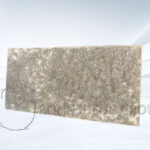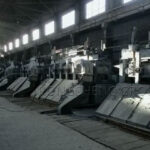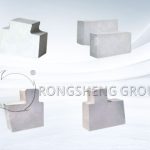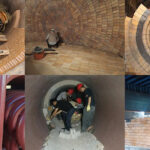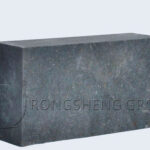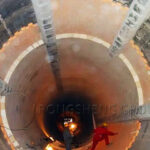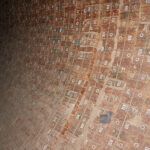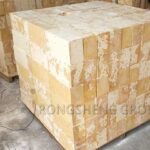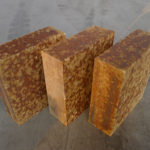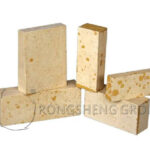Silicon nitride combined silicon carbide refractory is a non-metallic material with high hardness. It has good wear resistance, high-temperature strength, high temperature creep resistance and slag erosion resistance, good thermal shock stability, and other excellent properties, as well as good oxidation resistance. Silicon nitride bonded silicon carbide brick refers to a refractory brick product made of SiC and Si and fired by nitriding.
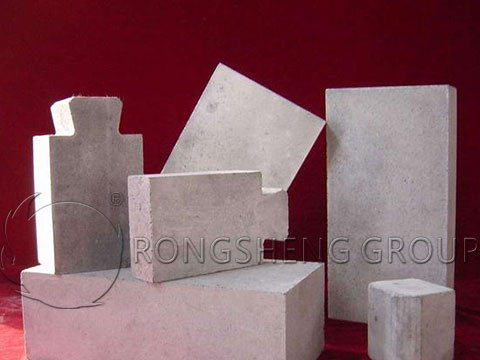
Silicon nitride bonded silicon carbide brick
Silicon nitride bonded silicon carbide bricks generally contain 70% to 75% silicon carbide and 18% to 25% silicon nitride. It has good corrosion resistance, the flexural strength at 1400°C reaches 50-55MPa, and the apparent porosity is 15%. The coefficient of thermal expansion is low, generally (4.5~5.0)×10-2℃-1. And has a higher thermal conductivity than silicon carbide bricks. Therefore, thermal stress is not easily generated when used at high temperatures, and thermal shock resistance is good. It is prepared by a high-temperature firing method.
Application of silicon nitride combined with silicon carbide products
Silicon nitride combined with silicon carbide material, with its excellent high-temperature mechanical properties and chemical stability, is widely used in large-scale ironmaking blast furnaces, non-ferrous metal smelting, aluminum electrolytic cell sidewall materials, ceramic kiln furniture, and fine ceramics.
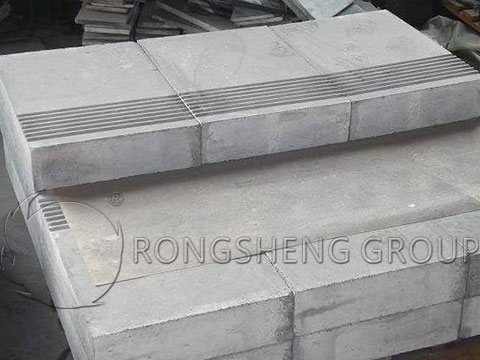
(1) Ironmaking blast furnace and non-ferrous metal smelting
Silicon nitride combined with silicon carbide refractories is a widely used material in the iron and steel metallurgy industry. Because of its good thermal shock stability, slag resistance, and oxidation resistance. In the lower part of the blast furnace body, such as the furnace waist, these materials are generally used, and the effect is relatively good. Silicon nitride bonded silicon carbide bricks have good resistance to alkali metal vapor corrosion. In ironmaking or steelmaking systems, it is non-wetting to molten steel and molten iron and has low wettability to slag. Improve its resistance to erosion and slag penetration. In the non-ferrous metal smelting industry, the non-wetting properties of silicon nitride combined with silicon carbide products to metal melts such as aluminum, copper, and magnesium. It has been gradually applied in the industry.
(2) Aluminum electrolytic cell
In recent years, silicon nitride bonded silicon carbide bricks have been widely used as sidewall materials for aluminum electrolytic cells. In the process of electrolyzing aluminum, the sidewalls will come into direct contact with molten alumina and electrolyte. At the same time, the process will release a lot of heat, which requires the sidewall material to have the following properties:
- High thermal conductivity, which is conducive to the formation of protective furnace ledges for sidewall materials.
- Does not react with aluminum, sodium, and molten cryolite electrolyte.
- The apparent porosity is low. Prevent the erosion and penetration of molten electrolyte and molten aluminum from damaging the material.
- Good oxidation resistance.
Carbonaceous materials and silicon nitride combined with silicon carbide materials can basically meet these performance requirements. In the traditional electrolytic aluminum industry, it is mostly used as the sidewall material of aluminum electrolytic cells. Carbonaceous materials are non-wetting to metal melts, and at the same time, they have high thermal conductivity and low cost. In the beginning, it has always been the material of choice for the sidewall of aluminum electrolytic cells, but carbonaceous materials have one of the biggest disadvantages. That is, it is easy to be oxidized when the temperature is high, causing the material to become loose, and the molten electrolyte is more likely to penetrate into the material. The oxidation resistance of silicon nitride bonded silicon carbide bricks are significantly better than that of carbonaceous materials, and its performance largely meets the requirements of aluminum electrolytic cell sidewall materials. Therefore, it has gradually replaced carbonaceous materials and has become the mainstream of sidewall materials in the electrolytic aluminum industry.
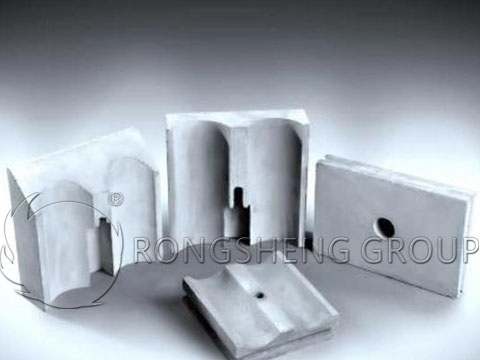
(3) Fine ceramics field
Si3N4/SiC composite ceramics has been a research hotspot in the field of fine ceramics for the past two to three decades, and the corresponding theories have been quite mature, and there have been many research results. Compared with Si3N4 ceramics, Si3N4/SiC composite ceramics have a more excellent high-temperature performance. This is because Si3N4 will exhibit grain boundary slippage at high temperatures, which deteriorates its performance. Therefore, most of the current methods are to introduce SiC particles or whiskers into Si3N4-based ceramics. Through a special sintering method, the toughening phase of SiC particles/whiskers quickly enters the Si3N4 grain boundary. Through its anchoring effect, the creep resistance of the sample at high temperature is improved, thereby improving the overall high-temperature performance of the sample. On this basis, Si3N4/SiC composite materials have been widely used. Because it has the advantages of good high-temperature strength, low thermal diffusion coefficient, and good thermal shock resistance. Si3N4/SiC composite materials have become the most promising high-temperature composite structure ceramics in the high-temperature or ultra-high temperature field.
Want to learn more? Please leave a message on our website page or send us an email. We will provide you with services according to your specific needs.

